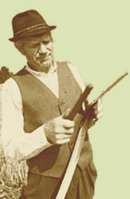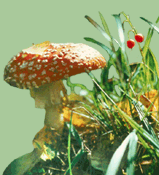The Common Crane is doing well in Estonia
Aivar Leito describes the life and habits and changes in the lifeways of the large, but modest bird. The cover story features the crane thoroughly: its distribution and habitats, biology and migration, threats and protection measures. Since cranes are well researched in Estonia, the article is supplemented with detailed graphics and data about the cranes, not to mention abundant photographs of the majestic birds. As some of the cranes have been equipped with radio transmitters, the scientists have valuable knowledge about the behaviour of crane families. The Common Crane is a protected species, threatened mostly by human activity and climate change.
The peninsulas of Kopli and Paljassaare were islands up until quite recently
Leili Saarse and Jüri Vassiljev take a geologists look at the fight between the sea and land within the Tallinn city limits. The peninsulas started emerging from the sea about 5000 years ago. Today, these peninsulas encompass Tallinns most important harbours. The peninsulas are the sills shaped by the continental ice sheet, now rising from the sea. The land rise in Tallinn is 2.4 cm/year. The many diagrams illustrate how the land has risen, step by step. The comparison of maps and diagrams enable to predict future landscape changes caused by land uplift. In recent decades, however, the peninsulas have been more affected by human activity than by land uplift or sea activity.
Estonia could have Geoparks as well
Hella Kink is convinced that there should be geoparks in Estonia: these could help to maintain and introduce our most valuable geological monuments. Currently there are about 60 such parks in the world. In Estonia there are proposals in work to establish the geoparks at Saka-Ontika and in North-West Estonia. The latter would include many landscape protection areas and other protected sites, as well as beautiful sections of the Baltic Klint.
Protected areas: A protected area for protecting the blossoms of the air
Eike Vunk introduces the RajaKärevere protected area located close to Tartu, which is aimed at forfending three rare butterfly species. The protected area was founded in 2006 as a result of the selection of Natura 2000 areas. Most of the area is covered with damp forest not attractive for people.
Our Boletuses 10
Vello Liivs picture series continues with Boletus species that do not even have Estonian names yet.
Interview: The joy of vegetation research will last for all generations
Toomas Kukk has interviewed Professor Jaanus Paal.
Estonian Nature enquires
Mati Kaal explains why the Tallinn Zoo does not take in Red-Eared Slider turtles.
Allan Selin writes about the memorial medal of Hans Remm.
Hiking trail: At the time of flood
Tapio Vares shares his impressions of the surroundings of the Daugava River, where the initial natural landscape has been altered in the name of hydroenergy, but a lot has remained as well. The building of the Aizkraukle dam raised the water level by at least 30 meters, burying several lovely canyons and other natural monuments. On the Pçrse River there was once the most outstanding natural monument of Latvia the Staburag, a 20 m-high cliff shaped by sediments of the calcareous springs that burst out of the cliff. It is now buried by the waters of the Pïaviòas hydropower station. The author describes several other buried places he sees on his journey upstream along the Daugava River and finishes near Jçkabpils, where the imposing river still takes its own course.
Continuing on the subject of hybrid larches
Heldur Sander brings recent news of the molecular-biological research of larches, which have previously been determined based only on the outer features. It turned out that the larches that were considered to be European-Japanese larches are common European larches instead. The variations within the species of the European Larch are tremendous, that is why they are difficult to be determined.
Juhan Aul 111 did the dreams fail?
Juhan Javoið looks at the early plans of the founder of Estonian anthropology. Juhan Aul was especially interested in eugenics, and the article presents many of his ideas on the subject. At this time, in the first half of the 20th century, genes were still unknown for science. It was a challenge for Juhan Aul to try to figure out how to make human race better and how to save them from hereditary diseases. The wars, modernization and the change in scientific paradigmas had all decisive affects on Auls work and life.
The two-faced role of the Bupalus piniaria
Alar Läänelaid, Piret Lille and Kaljo Voolma try to make sure where forest patology ends and forest ecology starts, based on the example of a forest pest. In 2007 the authors surveyed the pine forests of South-Estonia, which were damaged by massive outbreak of Bupalus piniaria and found that several years after the outbreak the pine trees gain significantly in portliness.
Stone pine nuts are actually pine seeds
Urmas Kokassaar speaks highly of the biochemical content of the seeds of the (Italian) Stone Pine. The most common use of the oil-rich seeds is in pesto sauce.
|


![[IN ENGLISH]](images/gb.gif)





